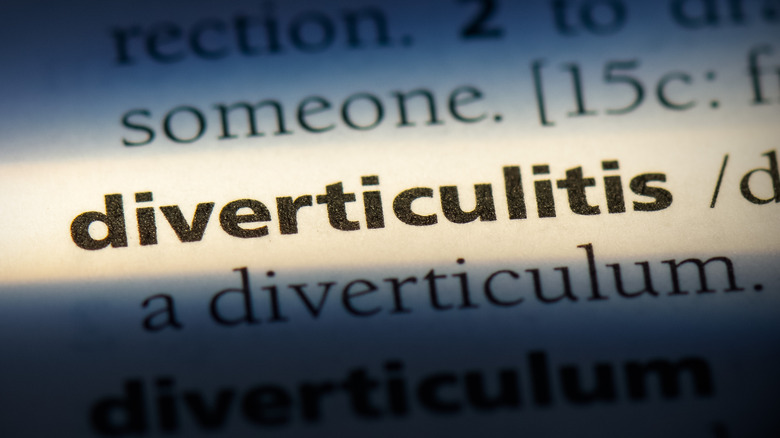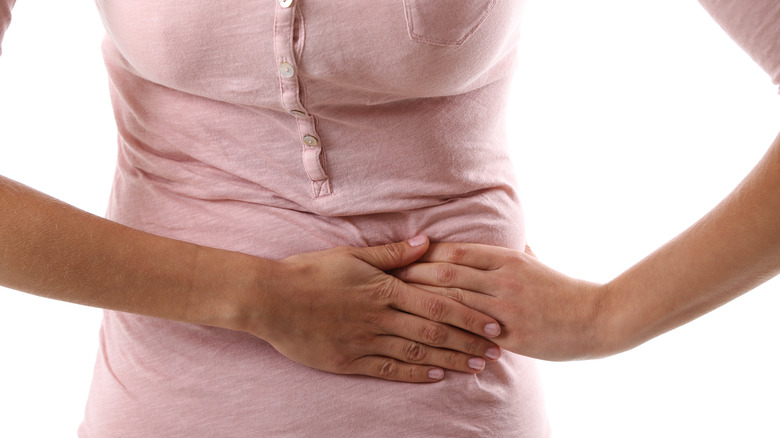What It Really Feels Like When You Have A Diverticulitis Attack
Diverticulitis is a condition caused by diverticula in your colon. Diverticula are small sacs that develop along the inside of your large intestine, and most of the time, they don't cause problems. In fact, some people who have diverticula might not know they have it. However, when these sacs become inflamed or infected, it is called diverticulitis, according to the National Institute of Diabetes and Digestive and Kidney Diseases.
Experts are unsure about the exact cause of diverticulitis, but it might be due to a lack of fiber in one's diet. When there isn't enough fiber in your stools, they can become hard and cause constipation. Being constipated puts pressure on the walls of your intestine, which could cause the sacs to form. Other reasons you may have diverticulitis may be genetics, a lack of exercise, obesity, a lack of healthy bacteria in your gut, smoking, and certain medications (per the National Institute of Diabetes and Digestive and Kidney Diseases).
Diverticulitis flare-ups can be painful
One of the most common symptoms of diverticulitis is sharp pain and tenderness that generally occurs on the lower side of the abdomen. Pain could be mild at first, but it can become more severe over a few days. Sometimes, however, the pain can be sudden, per the Cleveland Clinic. Other symptoms include cramping, constipation, vomiting, fever, nausea, and chills. Severe cases can lead to tearing, bleeding, and blockages, which may require hospitalization or surgery, according to the American Academy of Family Physicians.
Treatment for diverticulitis depends on how severe it is. A liquid diet usually helps ease the pain for mild symptoms. When symptoms subside, you can usually add low-fiber foods to your diet, such as potatoes, rice, canned fruits, eggs, and yogurt (via the Mayo Clinic). Your doctor will let you know when you can begin to introduce more fiber into your diet. To keep your bowels healthy, you should continue to eat fiber, aiming for 14 grams for every 1,000 calories you eat. You should also drink plenty of fluids, and exercise for 30 minutes a day.


